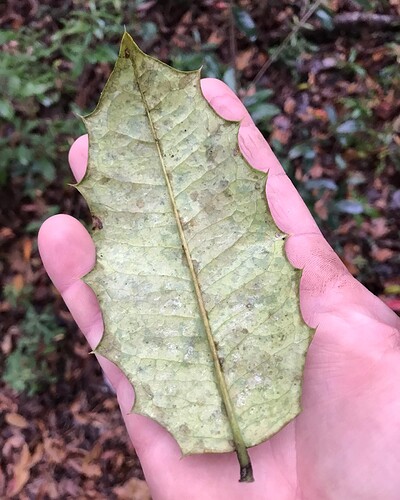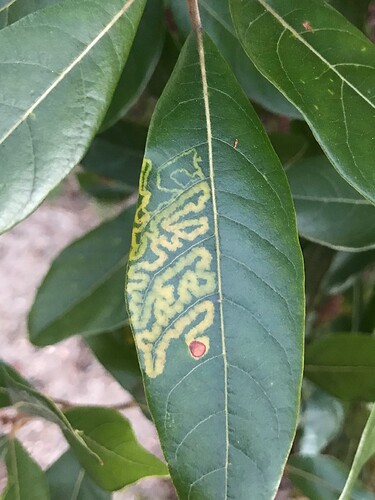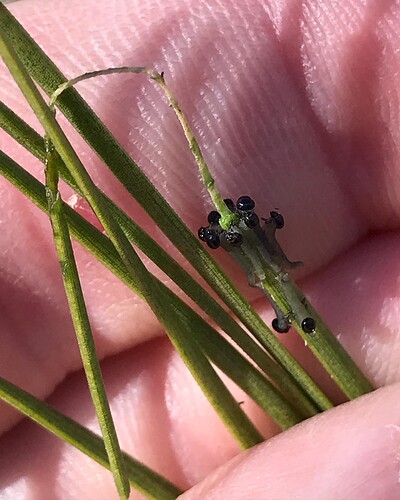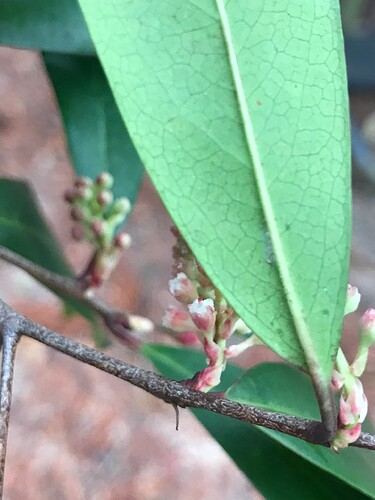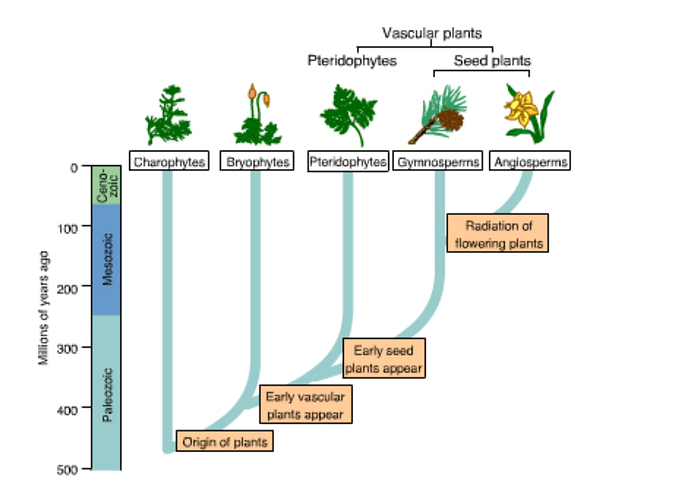Usually the discussion of evolution only covers the development of animal life. How does an evolutionary view of the development of earth address things like plant life, weather and seasons?
My thought is evolutionary views are traditionally thought of as just in biologic systems, so of course plants, fungi, bacteria, and viruses would be included (viruses being biologic, if not perhaps alive depending on definition). However, things like weather, seasons, geology and astrophysics are not really covered by evolutionary theory, though within those disciplines, there are separate evolutionary themes and processes unrelated to biology. If you step back a few steps, all are just science. I think that is one reason you see BioLogos involved more with creation care (environmental science, global warming etc.) more lately, and being an advocate for good science no matter the discipline. That, and the fact that the culture wars have expanded to include those in the sciences in the fields of physics, medicine, ecology, and social sciences as well, and support for Christians in those areas has become a felt need.
The origin of flowering plants from non-flowering is a black hole : ) but we’ll get there. By neoteny. The evolutionary origin of non-flowering is, as in all eukaryotes, by endosymbiosis of prokaryotes. And the role of evolution in geology is enormous. Limestone, flint, chalk and fossil fuel were made by evolution. Whole mountain ranges. Temperate and tropical landscapes. Soil. Much of the atmosphere, cloud, rainfall, rivers, lakes. Look out your window and everything under the sun has been sculpted by evolution. Everything. If life had not originated in alkaline thermal vents four billion years ago all that would be the same is the continents and oceans of a dead rock and desert world. A warmer wetter Mars.
I guess it depends on the exact circles and material you engage with. 95% of the stuff I tend to read, listen to and seek out deals with plant evolution. It’s the same processes as the animal kingdom as far as natural selection and so on goes. There are some differences with how crazy it can get. From what I’ve read so far they believe essentially all plants at the moment evolved from green algae. It seems that spore producing plants started first which eventually led to plants that produce cones (gymnosperms ) and then flowering plants ( angiosperms ). With many fossilized trees we can tell a decent amount about their general life as far as what dendrology tells us I find the application of dendrochronology ( study of tree rings ) fun. Not only how it can be used to date things but to see how was the climate. We can trace rainy and drought times. You can even sometimes find evidence of prehistoric burns which can be used to say a indigenous tribe seemed to have so burns this often.
We can also often look at plant morphology in fossils to get a better idea of what that specific plant looks like. I really enjoy being able to look at phytogeography ( movement of plants as in spread and growth or decline of species and families). I’ve recently been reading on magnolias which have been here ever since Pangea. China has a ton of native magnolias and ISA only has a handful. But the data shows that the magnolias actually begin what is now called eastern USA and spread up through what was Canada , Russia and into China. They seemed to have favored what became China. But that tunes us into facts like what was connected then and ect…
But my favorite part about botanical evolution is the coevolution aspect of ecology between flora and fauna. Roots release hormones and chemicals that alters what soil food web develops and the mycorrhizal networks between fungi and roots that transfer nutrients, waters and even chemicals where trees can alter other trees of a herbivorous attack so that they can begin to all change their leaves chemical composition to more bitter or toxic. Some studies even suggest based off of insect wing vibration some plants determine if it’s beneficial for them and so on.
I could talk for hours on this but headed to work. There is a podcast called “ In Defense of Plants “ that digs really deep into these subjects. Tons of episodes out so far too.
One thing that is really beneficial when studying plants is a botanical glossary book. It can really help learning to identify parts. Such as noticing if the fruit is a pome, berry , drupe or something like a an aggregate fruit. This can help with species identification. But can be confusing such as most fruits in the rose family are pomes but some like cherries or peaches are actually drupes and then common names confuse things because blackberries are actually aggregate fruit while blueberries are actually berries.
One thing to look at for example are leaves. They have some really cool adaptations that are on par with flowers in my opinion. For one they come in a few types such as broadleaf (the typical leaf most people imagine ) , needles such as with pine trees and scales which are also found among conifers. Like junipers. There are like a dozen plus basic leaf shapes but just to name a few that is cool looking to me are bilobed, deltoid, aculeate and fenestrate/perforate. There are also leaf margins. For example the American holly is a aculeate leaf with spinous leaf margins. American holly leaf.
Cleft leaf margins are really pretty to me such as found in many oak leafs like southern red oak or Turkey oak. The Quercus genus has leaves with several margin types and shapes. The live oak and sand live oak for example has entire margins while the latter leaves are also very thick and curl inward to help with a as retaining moisture since they grow in the very southern sand dune areas. People often think they are just salt stunted live oaks but they are a separate species.
Some of the other cool developments within leaves that can also help indicate what type of environment they evolved to thrive in.
Take naturally occurring variegated leaves. Some of the most beautiful foliage is variegated foliage. Begonias are obviously well known for this. Fittonia has variegated veins. Often pretty pinks. Some leaves have variegation based on cells that can or cannot carry out photosynthesis and so the leaves has patches of dark and pale greens. The green leaves with white or cream leaves tends to be because of different cell genes. Variegation is believed to have developed as a form of mimicry , such as caladium mimicking leaf miner tracks or because of weird sunlight filtering through.
Leaf miner tracks.
Leaves with drips tend to help move water off of them quickly and another leaf that’s typically variegated but is known for it’s usually shape is the pitcher plants pitfalls. There is also other carnivorous plants with even crazier leaves such as the threads of sundews. Obviously we see how evolution played a roll in fall colors. When the sun is out in early spring the leaves are light green. As summer moves in and the heat and light is more intense they grow dark green. As the chlorophyll breaks down heading into fall the yellow carotenoids become noticeable and as the starches breakdown and the reactive sugars purples and anthocyanins develop. There is some evidence that if a trees sap is acidic or alkaline it can play a role in the fall colors as well. There is also the succulents, rock plants and so on with very juicy leaves. Leaf spines can obviously help with keeping herbivores away.
Another cool aspect to leaves is their role in ecology as the food for their hosted insects. Almost everyone has heard of how monarchs need milkweeds. That’s because their caterpillars have developed two adaptations. The first is that they instinctively know to chew the main veins ( the midrib ) to cut off the veins ability to move it’s poisonous sap to the vein nettings. They can then chew the leaf with minimal sap that their body can metabolize. But almost all other insects also have developed this technique and relationship with plants. Imperial moths can eat oak and even pine leaves. Sawflies in their larval form also eats pine needles.
Rosy maple moths are hosted by maples, spicebush swallowtails are hosted by several species in the Magnoliaceae family such as spicebushes and sweetbay magnolias.
There is even some cool foliage along shrubs like the winged sumac which has foliage along its stems in addition to traditional leaves.
Just like with the other kingdoms you can look at basal traits within every species of every genus of every family within each order and look at each clades divergent traits. Such as all oaks have acorns. Red oaks has acorns higher in tannins that take longer to develop, but also keeps their fresher longer after falling than the white oaks acorns that are sweeter becsuse they have less tannin. So deer will eat white acorns first, and then come back for the red acorns later on in spring when most white acorns are either eaten or bad. Squirrels also play a major role. Squirrels don’t just eat every acorn they gather immediately. They will bury them and come back to them later to eat. But often these buried acorns either get forgotten or the squirrel dies and so the acorn germinates.
Even the way in which we encourage a seed to germinate can tell us a bit about it. Such as seeds that require scarification let’s us know it’s from a fruit eaten by mammals or birds. Larger seeds by mammals more often. Many people at first thinks it’s counter productive for a plant to naturally grow something sweet on it. But it serves a purpose. These fruits get eaten and the seeds get passed through the digestive track and dispersed further away. Since manny anImals live in groups and will have a large area to forage you’ll find several parent seeds scattered about near one another. You may eat fruit from five different trees and pass them all in one spot a few hours later ( as an animal less common for our species now ). A cool coevolution is American pawpaws and the extinct giant sloths.
Some leaves also indicate other forms of mimicry though. The passionflowers often mimics the eggs of caterpillars. So they get pollinated but the butterflies are less likely to lay their eggs there because it looks like eggs are already there.
Some leaves even have visible hormone spots like near the base of the Carolina Laurel cherry. . You’ll notice these two spots ( one on each side of the midrib at the base just above the petiole.
One interesting aspect is how plants evolved in concert with human activity and farming. Generation times being short with annual plants, and selective pressure in farming being a strong factor, we see plants like corn coming into being from a wild ancestor plant that looks nothing like a modern corn plant. i suspect other grains, fruits, and legumes have changed in a similar fashion.
Popular accounts of evolution tend to focus on vertebrates, as the group that has the most attention from the general public (after all, they are vertebrates themselves). But we do have a good fossil record as well as a lot of biochemical evidence relating to plant evolution.
True plants are indeed descended from green algae, with charophytes being among the closest algal relatives of true plants. In turn, the green algae are most closely related to red algae. (There are assorted small groups of algae that complicate the picture a bit, but I’ll stick to the main groups.) In turn, an ancestor of red and green algae was the overwhelmingly most successful instance of a eukaryote-cyanobacterium symbiosis developing into an organelle, the chloroplast. Red and green algae and the true plants continue to house that modified cyanobacterium as chloroplasts.
What of all the other algae, such as brown algae, diatoms, dinoflagellates, coccolithophores, etc.? All of those major groups actually represent a secondary (or even more!) endosymbiosis of another algae rather than starting directly with a bacterium. All that is based on genetic and cellular anatomy; the fossil record is not very helpful for telling what’s going on if there are not significant morphological features. (Chemical traces may help to show that a distinctive group was present, but don’t track transitions very well.) Likewise, there are limits to how much evolutionary detail we can trace from spores and pollen - although they are very good indicators of the presence of particular kinds of plants (if they have distinctive features, which many do), they don’t give us confident evidence about the general morphology of the rest of the plant.
Going from complex green algae to plants, we generally have enough structure that the fossils give some idea of the key features involved in physical transitions. Simple non-vascular plants are the first to appear, followed by the first simple vascular plants - lycophytes and pteridophytes. Gradually, plants develop various structures that better equip them for life on land.
This topic was automatically closed 6 days after the last reply. New replies are no longer allowed.
